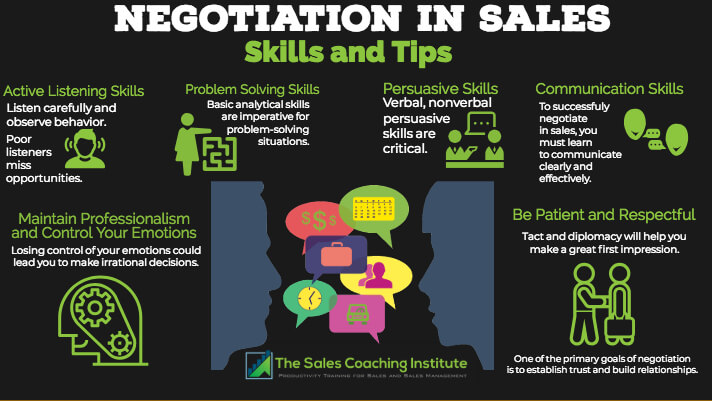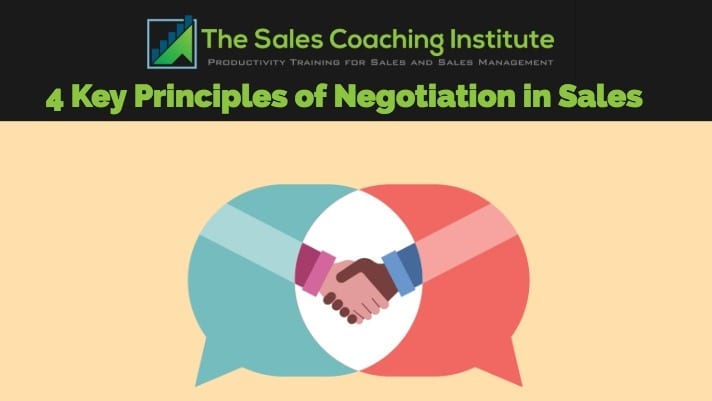Handling Customer Objections in Sales
Reframe Your Mindset When Handling Customer Objections in Sales
When handling customer objections, sales professionals must learn to shift their mindset from treating a “no” answer to a sales proposal as a personal rejection to recognizing it as an opportunity to learn more about the company and the challenges it faces. Reframing your mindset in this way is crucial to your success as a sales professional as it allows you to dig deeper into your customer’s mind in order to reveal positive alternatives and solutions. Continue reading “Handling Customer Objections in Sales”
The New Science of S.T.E.M – Sales Technology Enablement Management
The New Science of Sales Technology Enablement Management (S.T.E.M)
Sales technology has become increasingly popular over the last few decades, and it continues to be one of the best ways to help salespeople meet their goals. Without a doubt, sales is becoming more technology-driven as more companies are beginning to invest and incorporate the new science of S.T.E.M or Sales Technology Engagement Management into their sales teams.
Sales reps are usually expected to sell more and sell faster, which means they have to take advantage of these technological shifts. Many salespeople feel that their sales process is disrupted because they’ve had to change how they engage with customers, coworkers, and prospects. However, the new science of sales technology enablement management (S.T.E.M) allows salespeople to work smarter and efficiently by arming sales reps with technological tools to smoothly navigate each phase of the sales process. Understanding S.T.E.M and how it can work for sales teams is critical to enhancing the productivity of your sales force.
Related Reading: What Digital Selling Skills Do Sales People Need To Be Successful?
Why S.T.E.M Is Essential
Sales Technology Enablement Management is a necessity now because technology isn’t slowing down or going away. The way companies keep up with sales technology impacts the way sales teams work together and how they interact with customers. Learning how to master the new science of S.T.E.M is critical to the success of sales teams.

For the most part, sales reps want to learn the new technology and use it because they know it can help them work smarter. The demand for sales representatives with S.T.E.M skills has been more important now more than ever due to the ever-increasing amount of information that is available to both buyers and sellers. The new science of S.T.E.M. has changed the selling landscape tremendously by allowing access to data and insights that were not as accessible before. This access to data has leveled the playing field for sellers and buyers alike.
Related Reading: A Three-Step Process to Digitally Transform Your Sales Team
Finding Solutions with S.T.E.M
Getting real or quantifiable results are based on science. Sales Technology Enablement Management means that you have a plan in place and a strategy that works. You must ask plenty of questions. Sales reps must determine what their target audience is and what they need. You also have to research everything, determine a hypothesis and then test the hypothesis.
During the testing phase, you should gather appropriate information and analyze the data to determine the outcome. Talk with others in the firm about your results and determine if that is a viable solution. If you think it could be better, you’re more than welcome to research a little more, create a new hypothesis, and test it, as well. Continue with the process until you find something that works for you and your team. In some cases, it may require a few tweaks to the overall strategy, or you may have to change everything completely.
S.T.E.M and The Evolution of Sales Teams

The new science of S.T.E.M. is critical to improving modern sales teams and their sales strategies. New S.T.E.M technology supports sales teams by allowing them to utilize technology that can enhance sales productivity and analytic skills. While traditional selling practices should not be abandoned, implementing S.T.E.M. best practices with sales training shows great promise for enhancing productivity and overall performance of sales teams.
Do you like what you just read? Visit our resource center and download any or all of our 17 Executive Sales White Papers to help improve your sales skills training and build a successful sales career.
4 Successful Sales Strategies for the Fourth-Quarter Revenue Push
Stay Focused During The Fourth-Quarter Revenue Push
The fourth-quarter revenue push is always a worrisome thing for CEOs and owners of companies. You’ve only got a few more months to earn as much money as you can, which is why your salespeople have to be on their game. Of course, most people know that the fourth quarter might not be the best time to hire recruits, so it’s a good idea to keep your team happy, motivated and focused during this busy period. Here are 4 sales strategies to help your sales teams push through the fourth-quarter revenue rush!
Motivation is Key

Your team has been working tirelessly for the whole year, and they may want to take a bit of time to slack, especially in the fourth quarter. While it’s a natural inclination, it’s your job or that of your manager to ensure that your sales reps stay motivated. Ensure that your sales leaders are effectively communicating with your sales teams. Inquire into any personal or professional issues that might affect their sales performance and provide support if needed.
Related Reading: Different Types of Motivation To Keep Yourself and Your Team Ambitious & Successful

Utilize a Variety of Incentives to Motivate
You can choose many motivational tools to help, such as monetary bonuses, special trips, extra days for vacation, and more. These little pushes can ensure that your salespeople stay focused on the big picture and get you through the rush so that you earn more and make your end-of-year goals.
Related Reading: How to Create a Motivational Environment for Sales Success
Focus on Driving Revenue
You should also be talking to your teams and representatives to determine the best ways to ensure that they close existing deals. Do they need more targeted outbound calls? Do they need to create goals to get them through the next 30 to 90 days? Learning what skills are necessary and what details need to be focused on can ensure that they improve during that time.
Related Video: What is Professional Selling?
Plan Your Sales Strategies

Regardless of the goal, your strategy includes two parts. You need to determine how you can affect the goal positively this minute and what steps you can take to accomplish the next step in the next week or so. If you continuously do this every week until the end of the year, you’re likely to see improvements, which can then be implemented for next year, as well.
The fourth quarter is the biggest sales quarter of the year. Sales teams must formulate strategies to ensure all sales operations are running smoothly and without hiccups. The fourth-quarter revenue push involves finding ways to beat burnout and motivating sales teams while scoring results.
Do you like what you just read? Visit our resource center and download any or all of our 17 Executive Sales White Papers to help improve your sales skills training and build a successful sales career.
4 Key Principles of Negotiation in Sales
Negotiation in Sales is About Perspective
Negotiating in sales is one of the most fundamental aspects of selling. Every sales professional will spend the majority of his/her career negotiating with either their customers, employees, and even themselves. Getting other people to see things from your perspective while listening to their point of view in an equally respective manner is a key aspect of acquiring new customers, retaining profit, and building meaningful relationships in business. It can also be the most frustrating. Negotiation is an art form that requires working with someone or groups with different views in order to create a mutually beneficial agreement.
Read Our Free White Paper: 8 Critical Negotiation Skills to Kill Your Sales Quota
Negotiators should think about how to develop strategies that will help both sides to get more of what they want. Don’t look at negotiation in sales as a competitive, win-lose battle where you inevitably cave into bad deals in order to avoid conflict. When negotiating in sales, you can achieve better results by keeping these 4 key principles in mind:

Separate Your Relationship from The Problem
Remember that your counterparts are human beings and not just another sale. They have their own feelings, opinions, values, and backgrounds that influence what they say during the negotiation.
To solve this problem, imagine the situation from their perspective. When you are negotiating with someone who is firm in their position, ask them how things are working out for them. This allows you to gauge their point of view more clearly and can help you avoid resorting to blaming tactics during the negotiation process.
Prioritize Interests
Often times negotiations begin with both parties coming out strong with their positions which leads to a deadlock. This can be difficult to get out of because you are left with little room to negotiate. A better stance to take would be to ask questions about their interests and what motivates their position. You can ask them why a particular stance is important to them or probe them for more details.
Prioritizing interests gives you a chance to share your own which can open up more opportunities to explore each other’s problems allowing you to create a solution that benefits both parties.
Manage Your Emotions
Allow yourself and your counterpart to be honest with any strong emotions you feel during the negotiation process. Give ample time for them to honestly speak their mind. Emotions get in the way of looking at the problem for what it is. Taking turns to express your feelings without interrupting lets you listen better to what is being said and can prevent arguments from getting out of hand.
Make Your Counterpart Feel Appreciated
Expressing appreciation can help to open up your counterparts during the negotiation process. Understanding where others are coming from and highlighting key points in what they are trying to communicate shows that you are listening. It also shows that you respect what they are saying and where they are coming from.
Stay Calm and Relaxed
It is imperative when negotiating in sales that you remain calm and relaxed. You want to inspire their emotions and control yours. Remember to think about objectives over objections. Over time the experience you gain from negotiating in sales will allow you to incorporate a unique style and flair but keep these 4 key principles of negotiation in mind on your next deal!

If you would like more information on how to sharpen your negotiation skills, read about our Negotiation for Sales Professionals Workshop!
Do you like what you just read? Visit our resource center and download any or all of our 17 Executive Sales White Papers to help improve your sales skills training and build a successful sales career.







